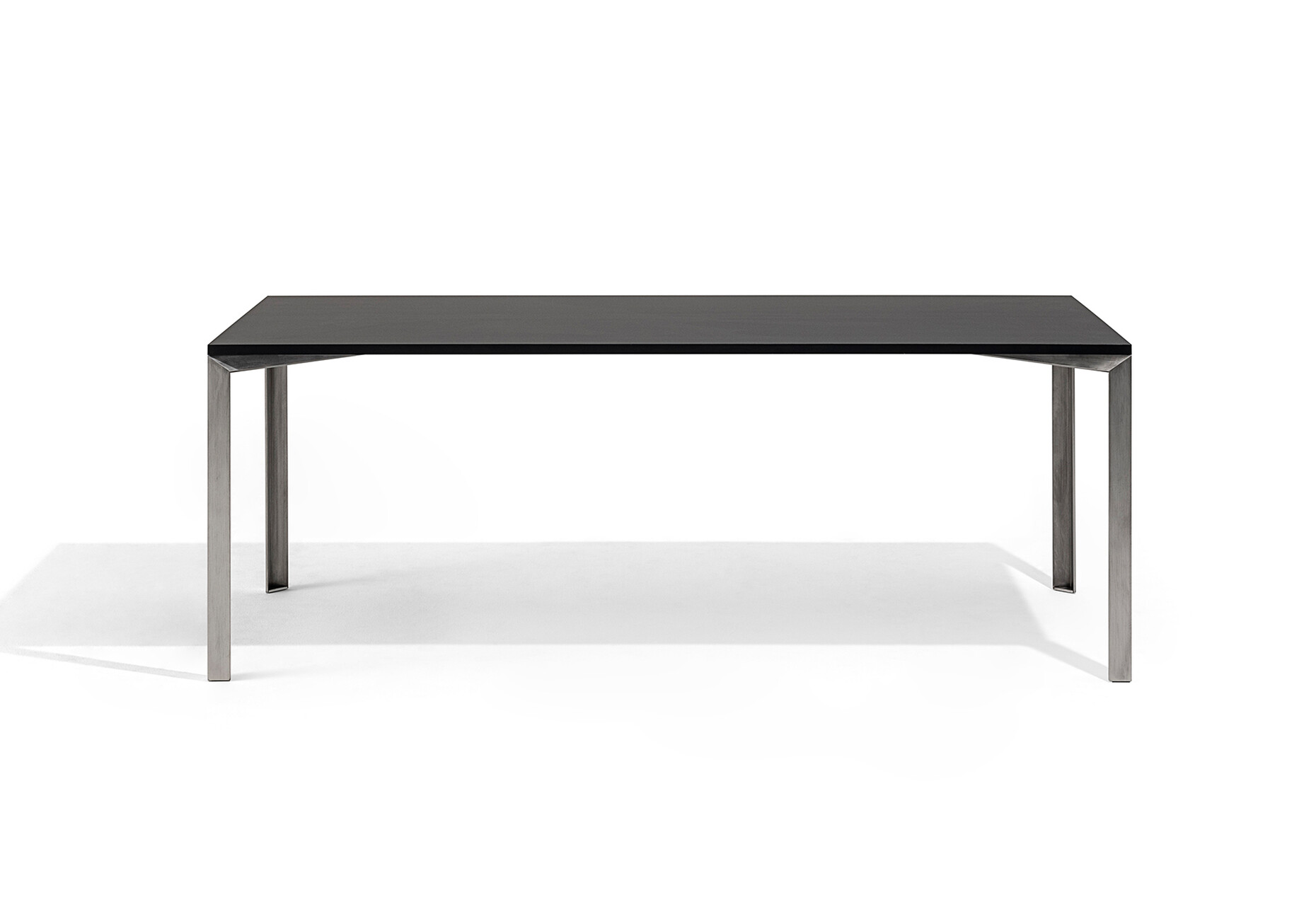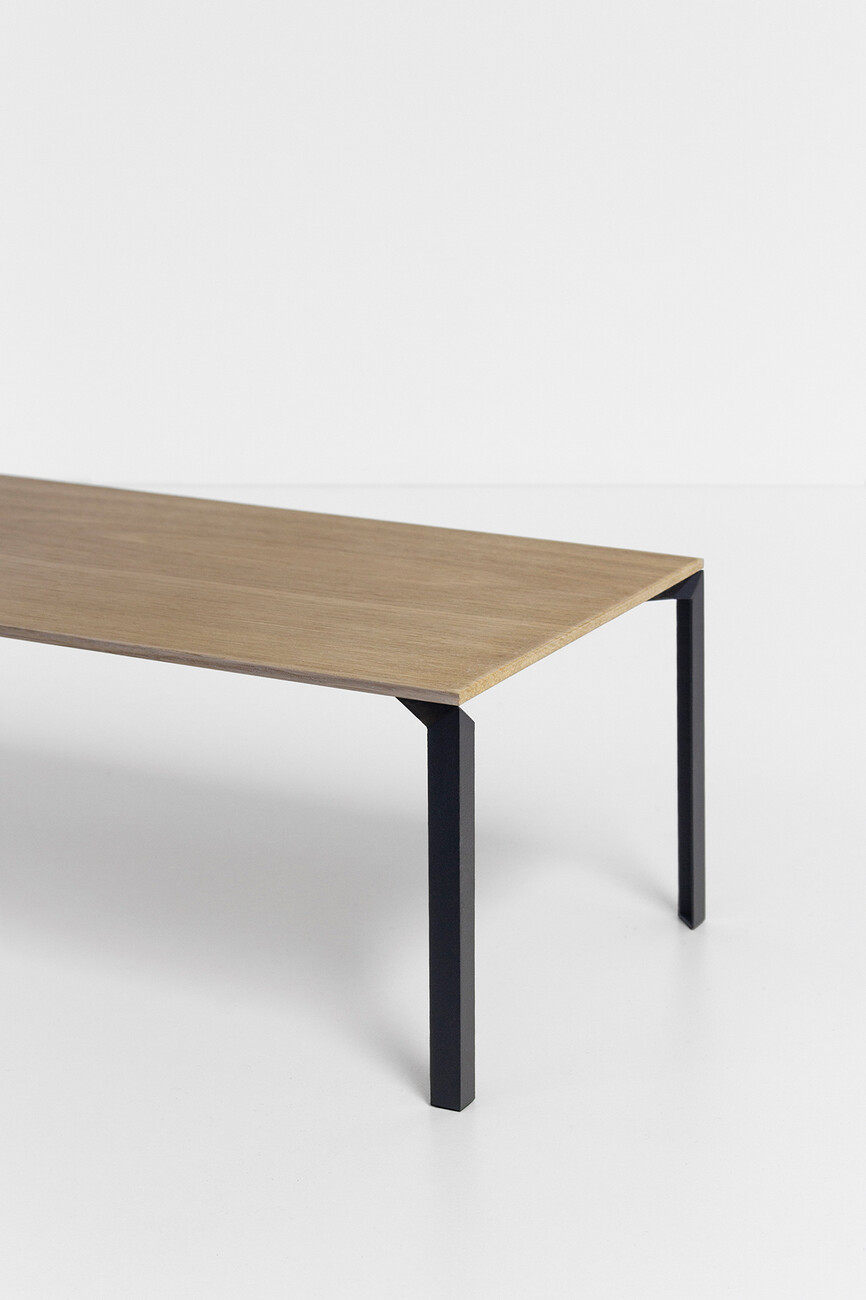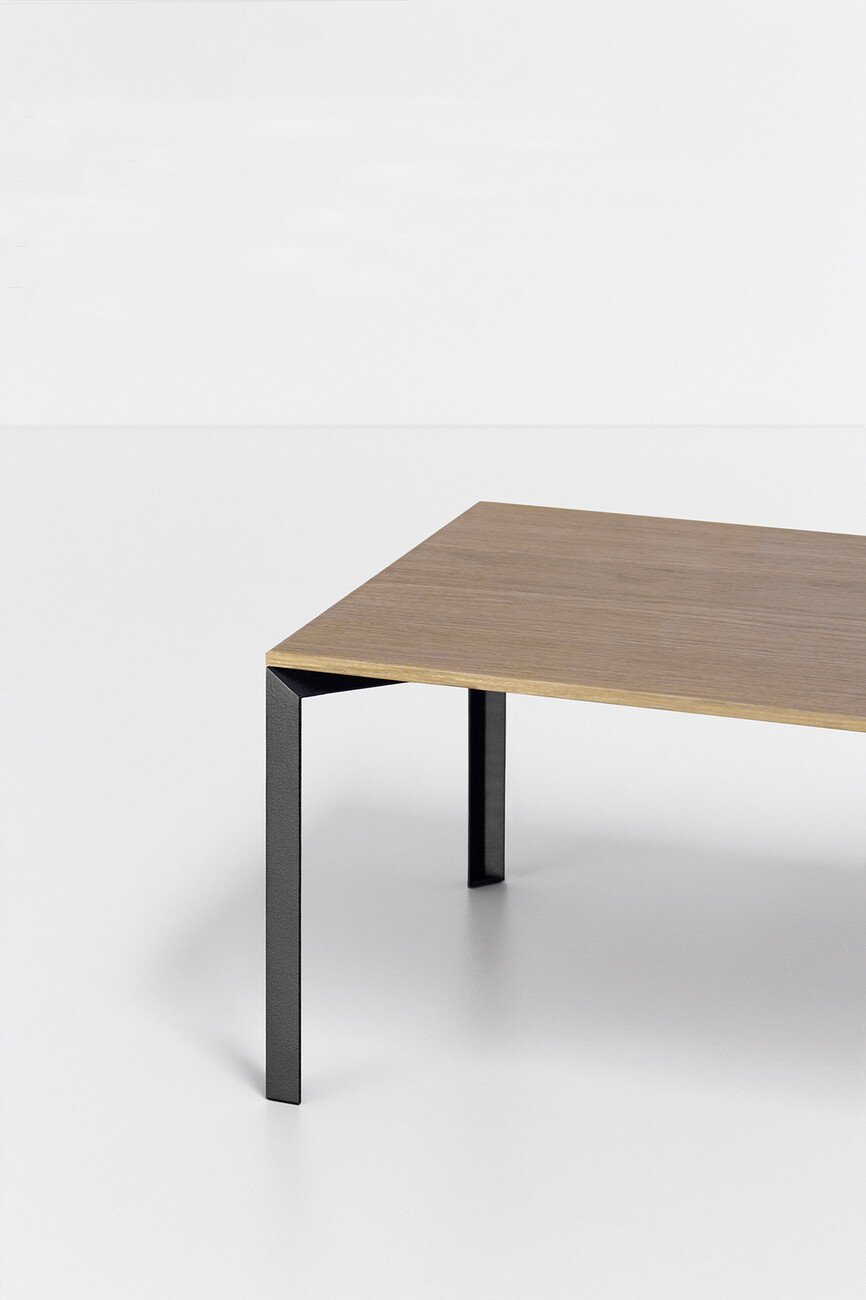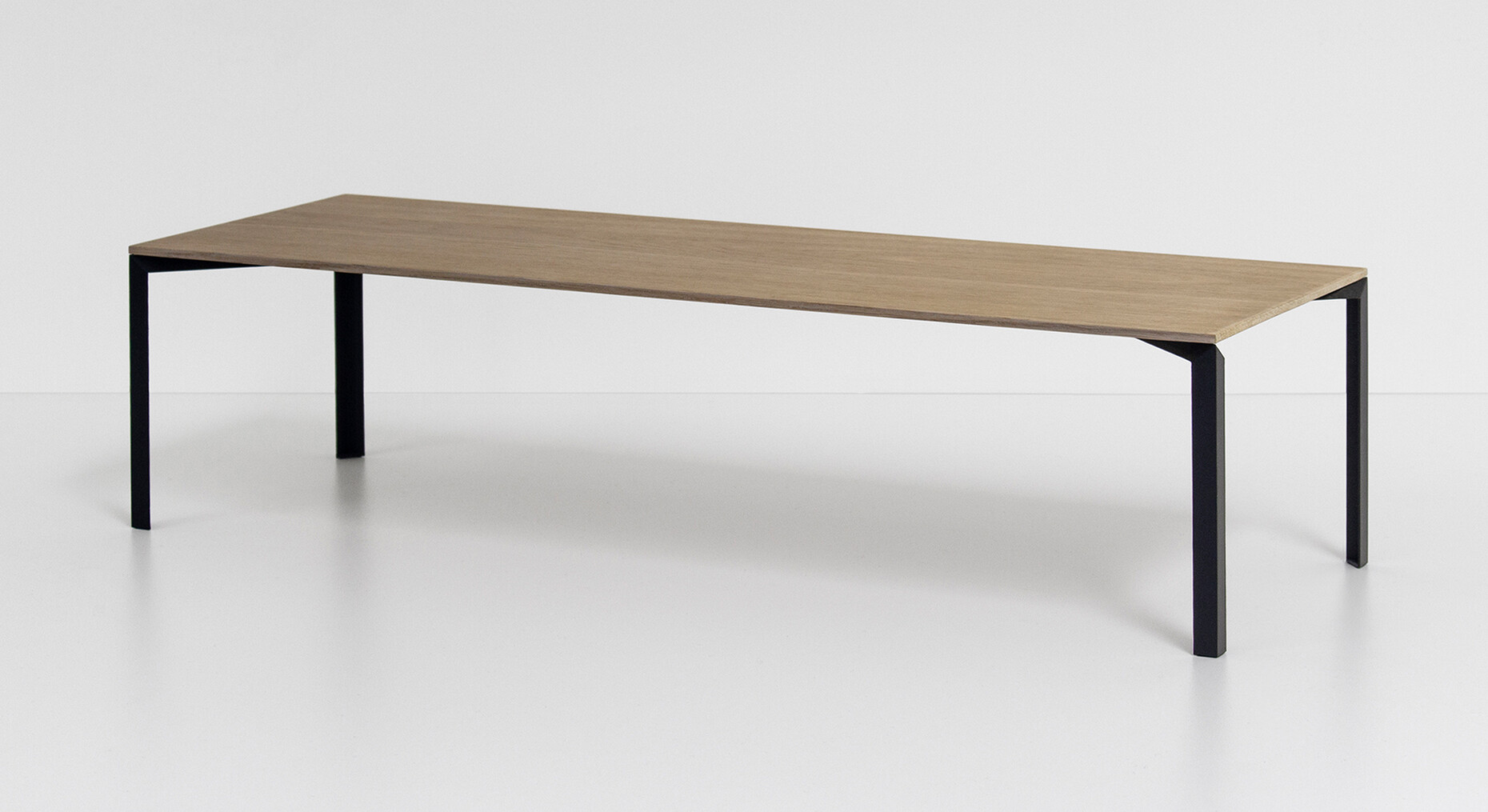Precision work
Anna Moldenhauer: Guglielmo, after the initial studies in Milan you graduated from the Design Academy in Eindhoven with an MA in Contextual Design. How did your time there influence you?
Guglielmo Poletti: My MA studies have been the most influential step of my career – a two-year playground that allowed me to explore many directions, to eventually find my own. Rather than following a preconceived set of rules, at the DAE students are forced out of their comfort zone and urged to experiment. I initially found that hard, but I slowly came to appreciate the benefits of trusting intuition, shaping my vision around it. All this led to my graduation project, the Equilibrium series, which embraces many of the working criteria that still underlie my work. Such criteria represent my starting point, which I try to challenge not to limit myself to a formal vocabulary people are already familiar with.
How did you develop such criteria and get a grip on them?
Guglielmo Poletti: Some tendencies about the way I deal with materials are innate, related to traits of my personality. This made things rough for me during my studies in the Netherlands. The aim there is to begin with a blank sheet. This re-set was difficult, but ultimately it was what I needed. It served as a distillation process, at the end of which what was left was authentic since it had been filtered through constant questioning. In Eindhoven I also learned that you better not rely on topics you have already mastered. My head of department once told me: “You have a natural affinity for aesthetics, don’t think about that. Find other aspects to concentrate on – the rest will follow.” It was a very helpful advice. I gradually got more involved with the essence of object structures, striving to create archetypes. The details were to stand out as sharply as possible. This approach helped me get to the crux of my vision: I am interested in construction and proportion, not much in styling or decoration.
Right after the end of your studies, Rossana Orlandi saw your works at the DAE Graduation Show during the 2016 Dutch Design Week and supported you from then onwards.
Guglielmo Poletti: Rossana has been a pivotal figure for me, to whom I am grateful. She gave me the opportunity to keep developing my work right after the graduation, the most delicate phase when a young designer should express his ideas boldly. She trusted and encouraged me constantly, giving me precious advices. She is unique in this – she knows how to nourish someone’s qualities to let them grow. Without her, I might have struggled to identify a proper way to keep up the pace with the production of my experimental pieces.
Why are your experimental works and limited editions so important to you?
Guglielmo Poletti: Free projects enable me to pursue the core of my interest, without external influences. The intimacy of this process help me to frame my position towards the discipline and to keep track of my attitude, which is crucial to ensure consistency throughout my practice – independently form the context it refers to.
Have you come across a material that surprised you in your experiments to date?
Guglielmo Poletti: When you directly interact with materials, instead of following a predetermined plan, everything has the potential to surprise you. I am interested in materials that can be shaped according to forces. I never draw, work with abstract models instead, structural studies I execute by hand. It’s a process that revolves around chance and you have to trust to the power of analytical thinking. I work with 3D softwares at the very last stage, when they are helpful to communicate with the company. But in order to translate your thoughts for a machine, you must rationalise them first – this is precisely what I try to avoid during my working process, as it prevents intuition to play an active role within the process.
Is there something all your works have in common?
Guglielmo Poletti: Along the years, I naturally developed an interest in construction, in relation to the properties of materials and their limits. In my work there is often a structural tension, created by a gesture that underlines the architectural qualities of objects. I am fascinated by works that shift one’s perception by appearing fragile, and yet manage to become structural and therefore functional.
The stereotypical definition of function is not foremost in your designs. What kind of interpretations of it inform your work?
Guglielmo Poletti: I have never been interested in defining function according to the stereotypical design perspective. If form follows the structure, the qualities of objects result from their construction. This position allows me to limit arbitrary aesthetic choices as much as possible. I consider function as an additional layer, that fulfils a structural purpose.
Can you name some figures who inspire you?
Guglielmo Poletti: Attitude is key, I like individuals who defy pigeonholing and follow a personal route devoted to the development of their exact vision, interweaving different disciplines. Donald Judd or Maarten Van Severen are great examples, independently from the media. Peter Zumthor is an architect I respect very much: he never compromises, and fights to preserve the values he believes in. I’m now renovating my studio, it’s the first time I deal with architectural design. Given the scale, the amount of details involved is much bigger in comparison to an object. Right after having started, I immediately realised why people like Peter Zumthor or Dom Hans van der Laan decided to focus just on a limited number of works throughout their career – in order to make proper choices and execute them accurately, quantity is not an option.
Are there any mentors who have directly influenced you in the past?
Guglielmo Poletti: Ron Gilad was the first one who showed me a more fluid interpretation of design. In 2013 I attended a workshop led by him at Domaine de Boisbuchet in France. Back then I was still floating and knew nothing about my profession, but things clicked thanks to his very independent way of thinking. He embodied many characteristics I was looking for – an autonomous approach, focused on few projects per time. This year, for instance, I am launching “just” a family of tables for Desalto, but I am fully satisfied with the outcome. The more projects I try to deliver in a short span of time like 1 year, the more difficult it becomes to come up with a strong work, and execute details properly. I believe that nowadays it is urgent to slow down and aim for high-quality products that encompass some levels of innovation, being it formal or technical.
And do you think you have already developed your own very individual design language?
Guglielmo Poletti: I think of the definition of “design language” the other way round, seeing it as the natural consequence of the layers that constitute the work: you first put together an alphabet, then start to build a vocabulary. Out of your vocabulary, many combinations can emerge, making your language less predictable. In this way, peaks that come from single ideas are always inscribed within an overall coherence which informs the process, making your work often recognisable.
Let’s talk of your shift towards the industry: how were you were approached by Desalto?
Guglielmo Poletti: Desalto got to know me in 2018, through my limited editions. Gordon Guillaumier, artistic director of the company, contacted me as he thought my design approach could be a great fit for them. On my side, I was looking for a company to collaborate with, but I was interested in finding one I could regard as a partner rather than as a “client”. I already knew and admired Desalto, since their products are all about precision, often pushing boundaries. The passion for what they do provides them with the necessary motivation to engage with experiments and craftsmanship. We got along well and they decided not to constrain me with specific briefs, leaving me with a great level of freedom from which the first collections resulted.
What are the differences between your work for Desalto and a piece that you create for a gallery?
Guglielmo Poletti: You have to be open to compromises when you produce commercial works. But these limitations also represent great production challenges. For example, my MM8 table was born as a one-off piece for a private client. It was way more experimental, but Desalto had enough persistency to engineer it up to the level required for it to become an industrial product. We worked with aluminum, exploiting the material’s properties to get to the thinnest structure possibile for the top. The Void series was also quite challenging, we spent so much time refining it to tune every detail. The volumes are entirely made of steel, which is bent in order to increase its structural properties. The pieces appear solid from one perspective, emptied from another, challenging one’s perception thanks to the contrast determined by shadows and their rigorous geometry. It’s truly amazing that we were able to jointly translate experimental design pieces into mass production products – there are not many companies willing to put the amount of effort needed to get there.
What is the core of your latest project for Desalto, the table collection "L45"?
Guglielmo Poletti: Once again, the new piece is about precision and subtraction. The core aspects of the project are embodied in a single detail, around which all the work revolves: the joint between the leg and the table top, characterised by a contact reduced to an absolute minimum, based on the meeting of the respective vertices. The construction is achieved through a precise structural gesture – the combination of two L-shaped profiles, which are cut at 45° to be joined at 90°. The resulting geometry produces a sense of precarious balance. The configuration is very pure, and it must be accurate down to the last millimeter – if the edges are not perfectly lined up, you don’t get the desired effect. The stability is assured by a wonderful technical construction beneath the top, which keeps everything in place. For me, this project is the umpteenth demonstration that creating something simple and simultaneously powerful is a highly complex matter. Although I never set out to work like this on purpose, I ended up once more with a project that hinges on absolute precision. This seems to always be the decisive ingredient for my work to succeed.



























